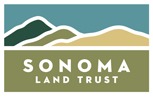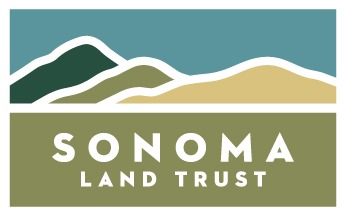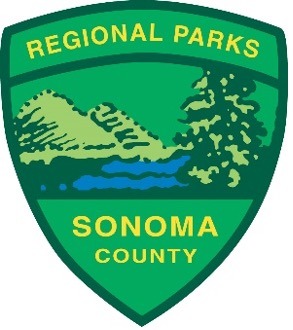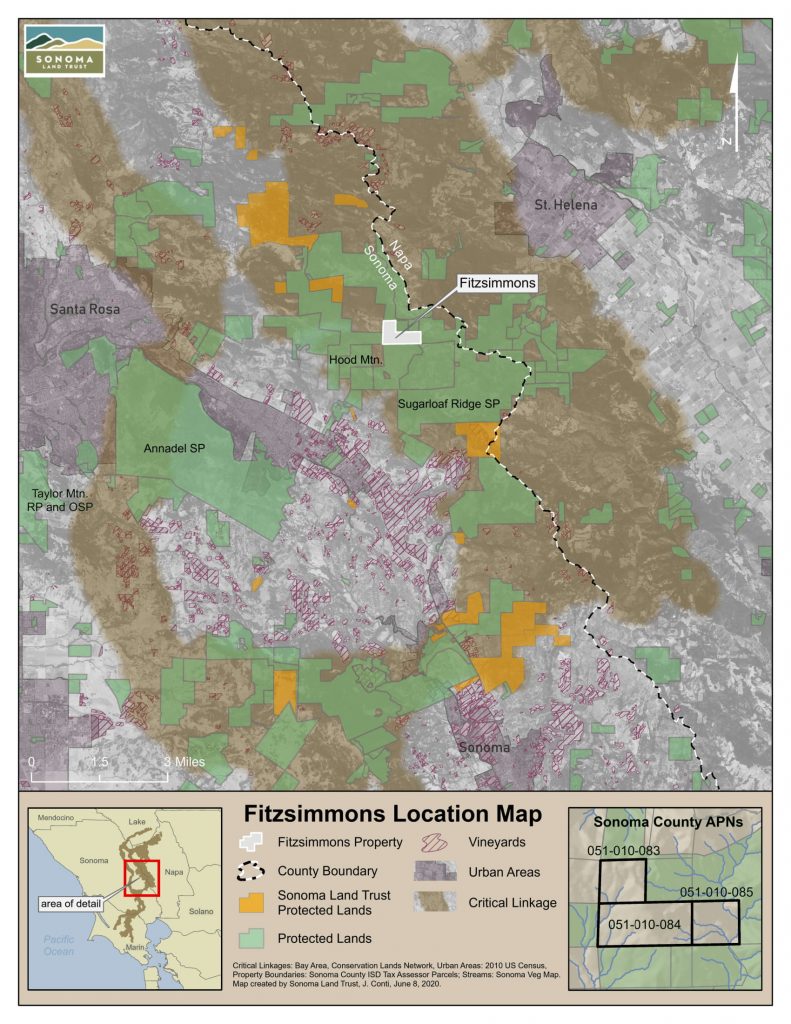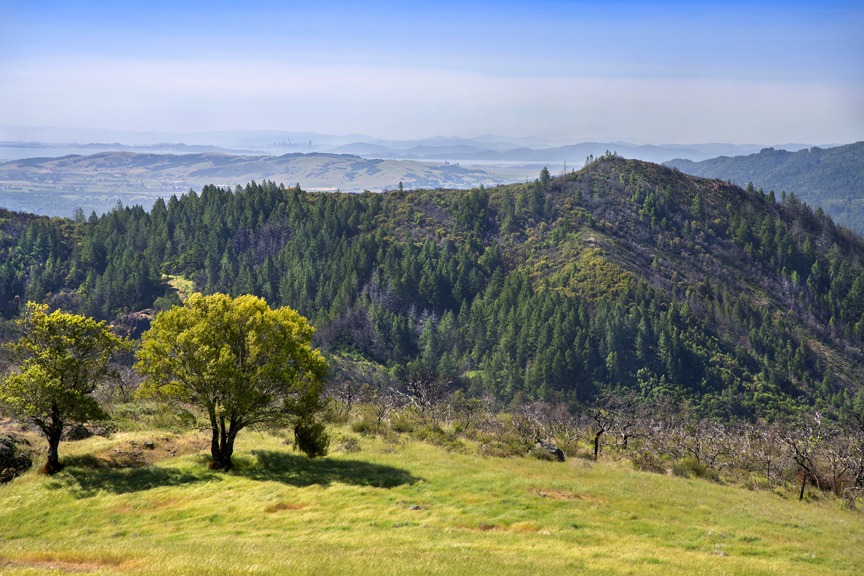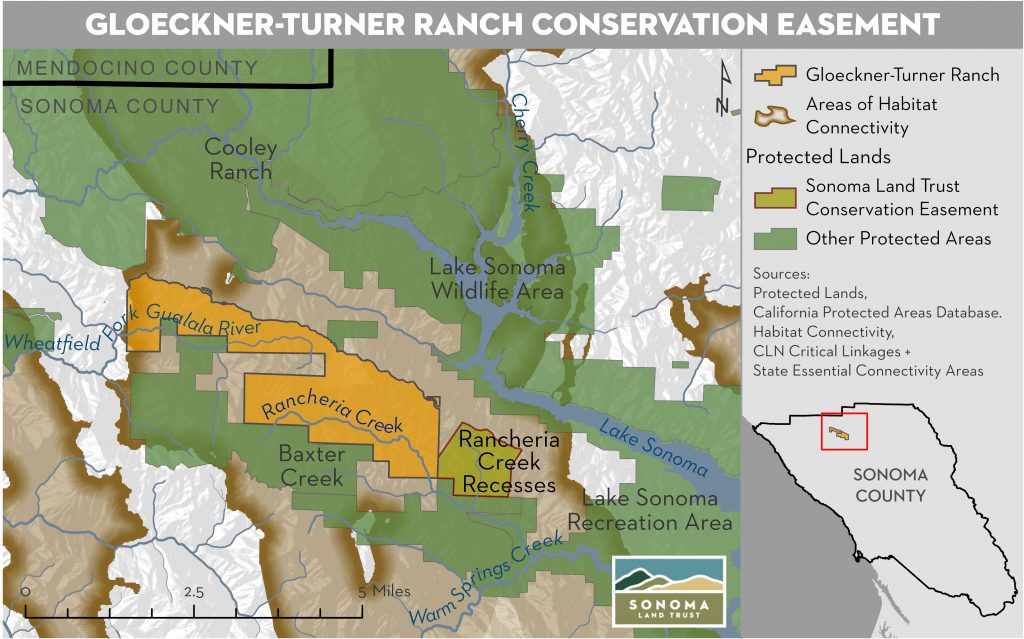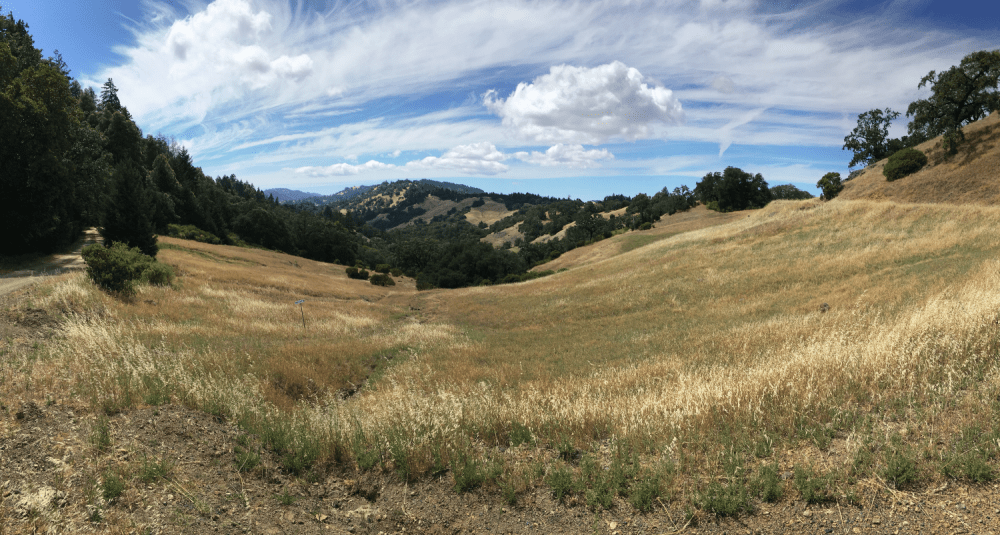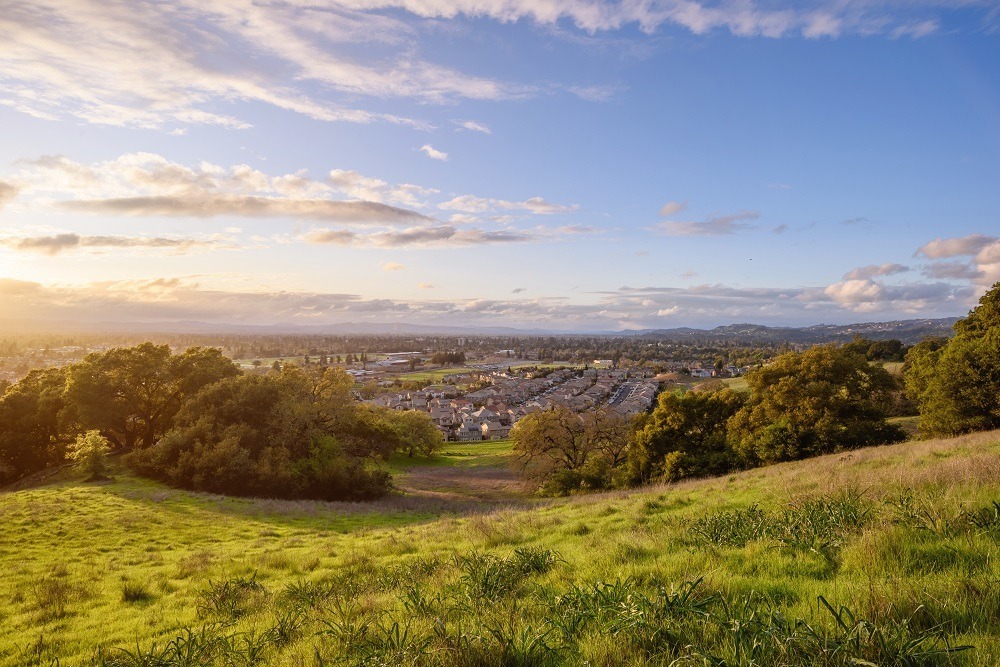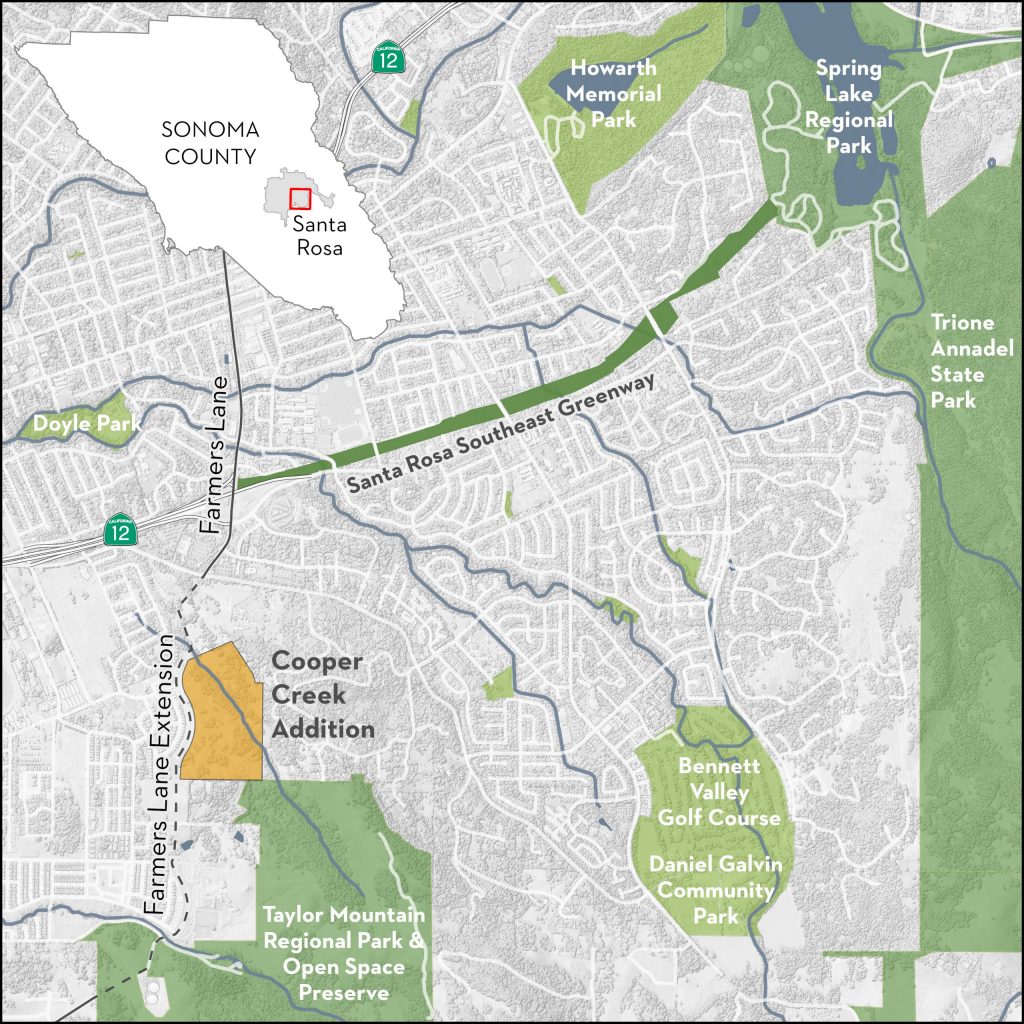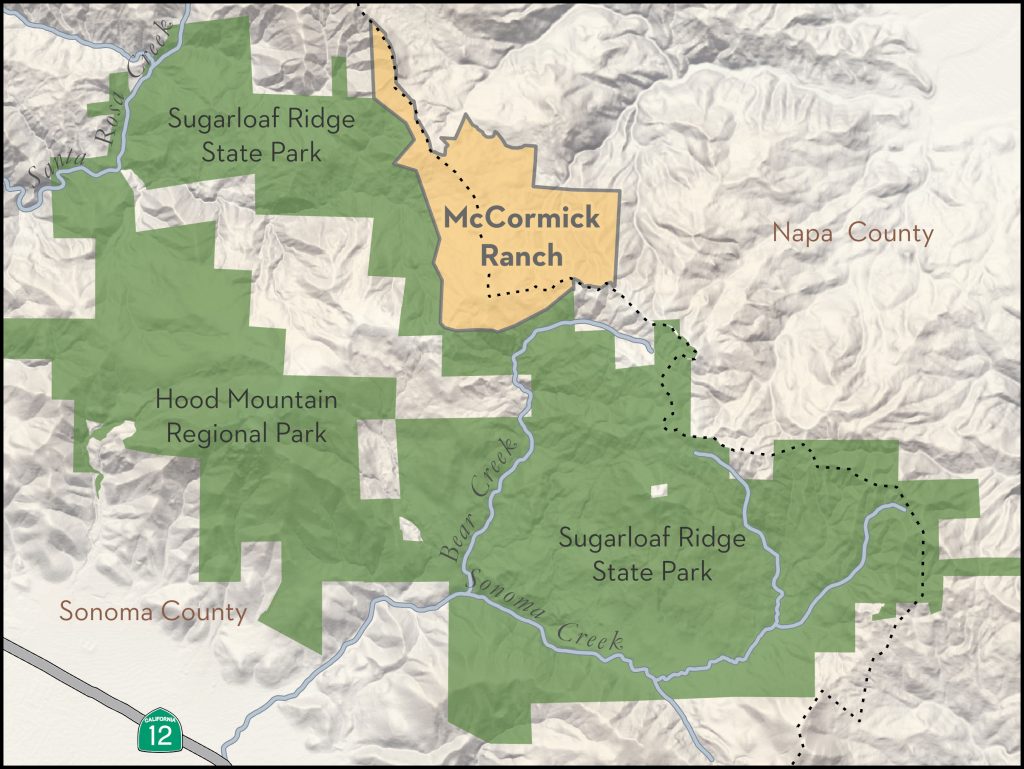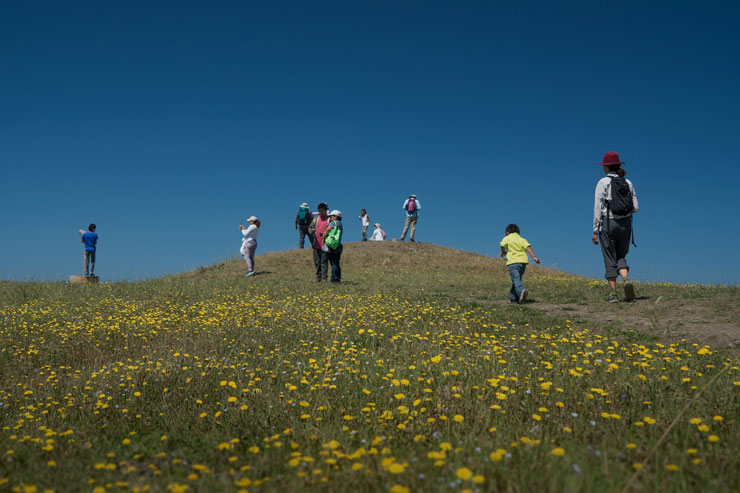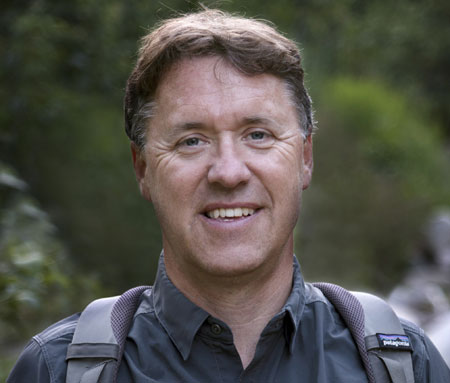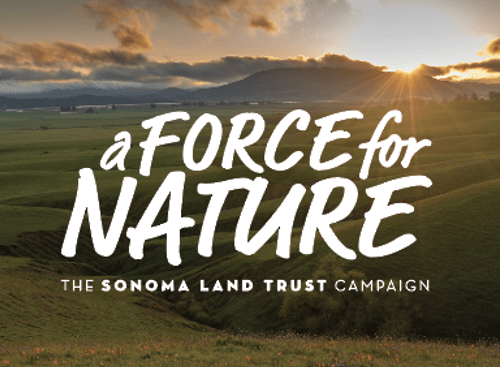
Nonprofit launches $80 million campaign to create a climate-ready and resilient Sonoma County
Sonoma Land Trust is taking bold action through our A FORCE FOR NATURE campaign. We’ve paired human resolve with nature-based solutions to build a more resilient Sonoma County. Members of the public are invited to join us at the free virtual campaign launch event on Tuesday, May 25 from 6−7pm. Co-hosts will be nature celebrity Doug McConnell, host of NBC Bay Area’s OpenRoad TV, and Seair Lorentz, co-founder of the new Petaluma River Park. Register for the event at sonomalandtrust.org.
The $80 million A Force for Nature Campaign is raising funds and awareness for our projects and programs, as well as securing commitments for future funding through planned gifts. Thanks to the generous support of our members, business partners, foundations and government funders, we are approximately 74 percent of the way to reaching our goal.
“To make the greatest impact, we have deepened our mission to adapt to the changing climate and reflect the diversity of the communities we serve,” says Land Trust executive director Eamon O’Byrne. “We must start by acknowledging that Sonoma County landscapes are not only breathtaking, but also breath-giving. Nature is not a nice-to-have amenity; it is the infrastructure of all life.”
Because of a growing awareness that land conservation is a key strategy for addressing our climate and extinction crises, California and the Federal government have set a 30 x 30 plan to conserve 30 percent of our lands by 2030. Sonoma Land Trust plans to protect thousands of acres of land rich in biodiversity over the next decade in support of the 30 x 30 goal. These lands will be managed collaboratively and with innovative approaches to build a more resilient Sonoma County.
An investment in natural solutions
We have developed six natural solutions, as part of our recent strategic planning process, that consider the health of our land, water and community members. These solutions work in alliance with nature to preserve our land and resources, and ensure safe access to nature and an equitable distribution of its benefits to all members of the community.
Protecting Our Biodiversity
Million-acre Sonoma County sits at the core of a biological hotspot, which means we have some of the world’s richest ecosystems, but also some of the most threatened. To support our vital biodiversity, Sonoma Land Trust is conserving lands threatened by development and preserving large, intact landscapes and wildlife corridors so that vulnerable populations of animals and plants can thrive.
Living With Wildfire
Working with the community, local government agencies, nonprofits and Indigenous tribes, we are working toward the goal of restoring fire’s ecological role on the landscape through improved forest management practices and the return of controlled burns on up to 50,000 acres in Sonoma County. These efforts will help mitigate the effects of climate change, promote ecosystem health and biodiversity, and improve fire resilience and safety for our communities.
Adapting to Rising Waters
We are working to adapt and mitigate the impacts of flooding from sea level rise and intense storms through the acquisition and restoration of wetlands, creeks and tidal marshes in the Sonoma Baylands. Wetlands, which act like sponges, are critical buffers to sea level rise, slowing down waves and storm surges to prevent flooding from extreme downpours.
Securing Freshwater Flows
Water and land are inextricably linked as water flows over, through and across our landscapes. Using innovative science, we have identified the most strategic parts of the Russian River system to acquire, protect and restore. Our goal is to expand essential habitats for fish, birds and other wildlife while simultaneously building community resilience to severe storms, droughts, flooding and sea level rise.
Preserving Nature Nearby
Parks can make cities healthier by lowering temperatures, improving air quality, reducing GHG emissions and providing opportunities for recreation. Through acquisition and transfer of land to county and city parks, we are expanding access in areas that lack nearby open space and facilitating innovative park-planning processes that meets the needs of all our communities.
Empowering Our Communities
We approach our work with an equity lens to ensure access and distribution of nature’s benefits to all community members. Through inclusive educational programming, we are supporting diverse and equitable communities and cultivating the next generation of nature advocates for Sonoma County.
As we say at the Land Trust, the solutions are right under our feet! From the Russian River watershed to the dramatic Sonoma Coast to the tidal marshes along the Sonoma Baylands, the land that Sonoma Land Trust is preserving has the power to fight climate change.
Leaders of the Campaign
Volunteers are at the heart of the campaign. Three co-chair couples lead the Campaign Steering Committee, which works in partnership with staff to ensure the campaign’s success. Our Board of Directors has also been instrumental to this campaign through their generous donations of time, talent and treasure.
Campaign Steering Committee Co-chairs:
- Simon and Kimberly Blattner
- Tim Portwood and Jim Lauber
- Harry and Dee Richardson
Campaign Steering Committee Members:
- Scott Hafner
- Steven Hightower
- Nancy Otto
- Ellie Rilla
- Allison Sanford
Supporters can participate in the campaign by continuing to make their annual gifts. Many will let us know about their intention to make a planned gift to Sonoma Land Trust — another great way to participate in the campaign. And some will make special gifts in support of ambitious goals spelled out in the strategic plan.
To be a force for nature by making a donation, or to learn more about the campaign, visit our campaign microsite at weareaforcefornature.org.
To speak with a member of our staff about making a gift or to learn more about our Legacy League, please contact Shannon Nichols, director of philanthropy, at (707) 933-7220 or shannon@sonomalandtrust.org.
“This is the most consequential decade for our planet; climate change and consequent wildfires, drought and species extinctions threaten our safety, resources, biodiversity, and physical and mental health,” says O’Byrne. “Nature is the most powerful tool we have for meaningful climate action.
# # #
About Sonoma Land Trust
Sonoma Land Trust works in alliance with nature to conserve and restore the integrity of the land with a focus on climate resiliency and is also committed to ensuring more equitable access to the outdoors. Since 1976, Sonoma Land Trust has protected more than 58,000 acres of scenic, natural, agricultural and open land for future generations. Sonoma Land Trust is the recipient of the 2019 Land Trust Alliance Award of Excellence and is accredited by the Land Trust Accreditation Commission. For more information, please visit www.sonomalandtrust.org.
